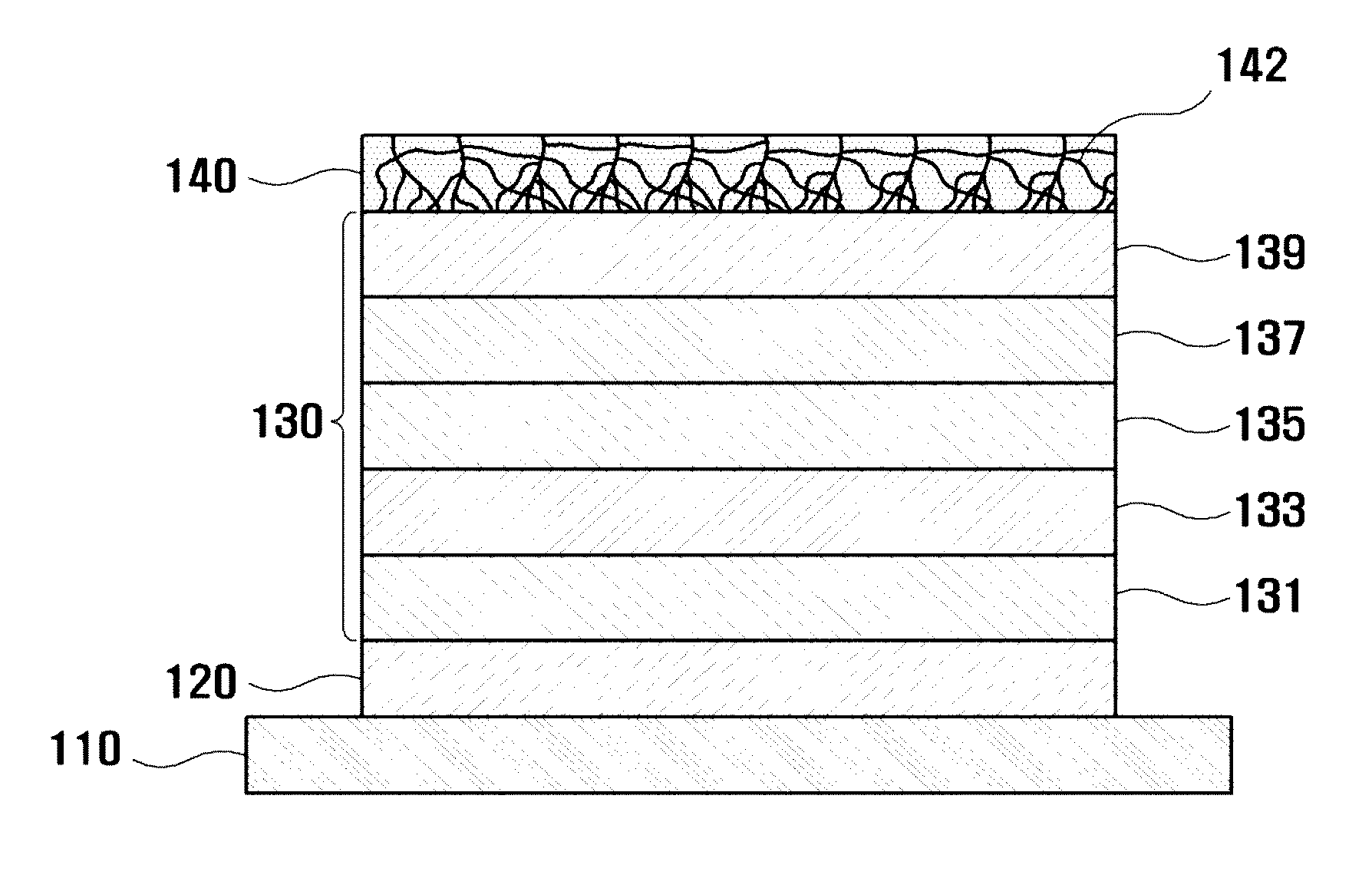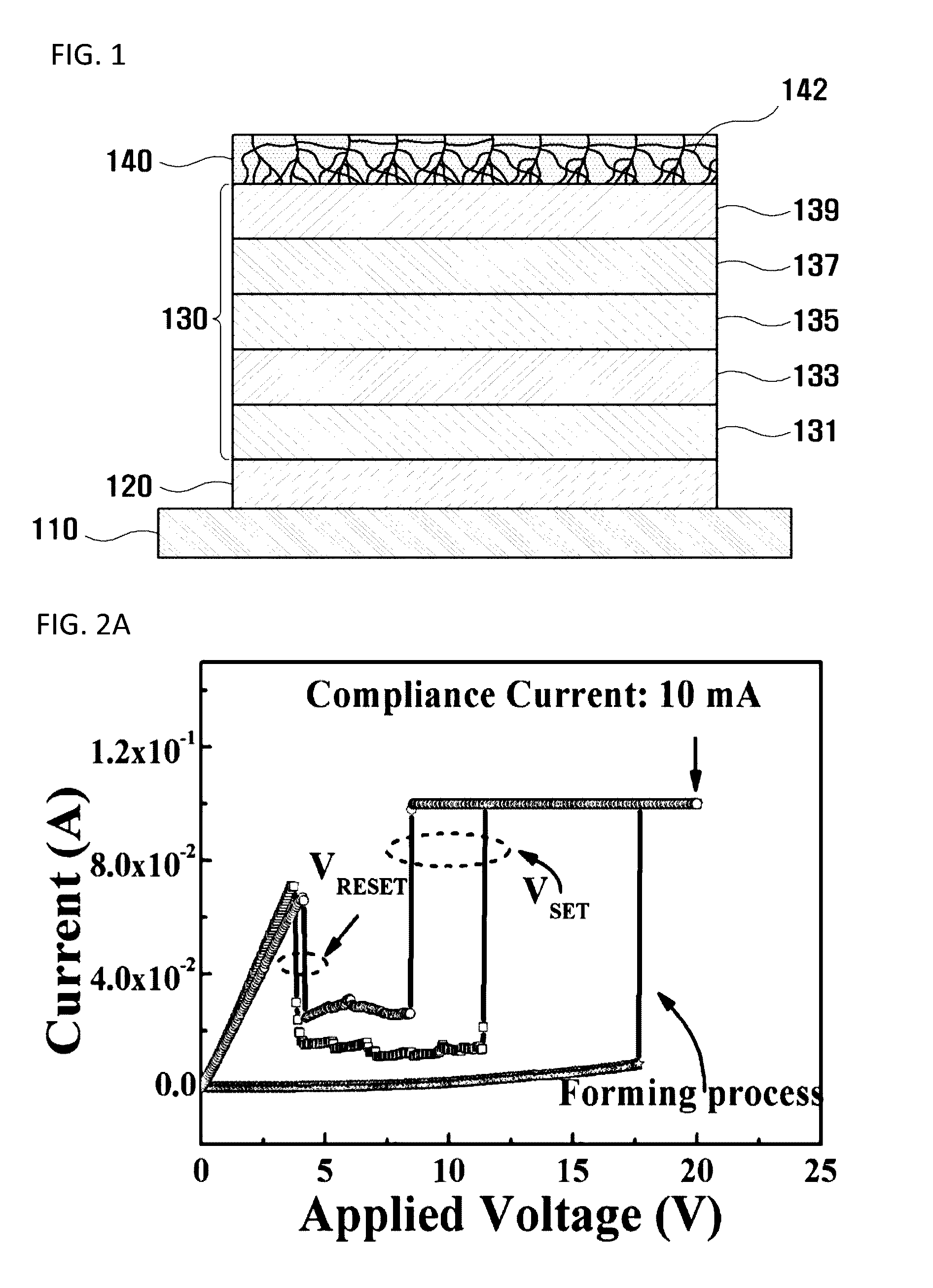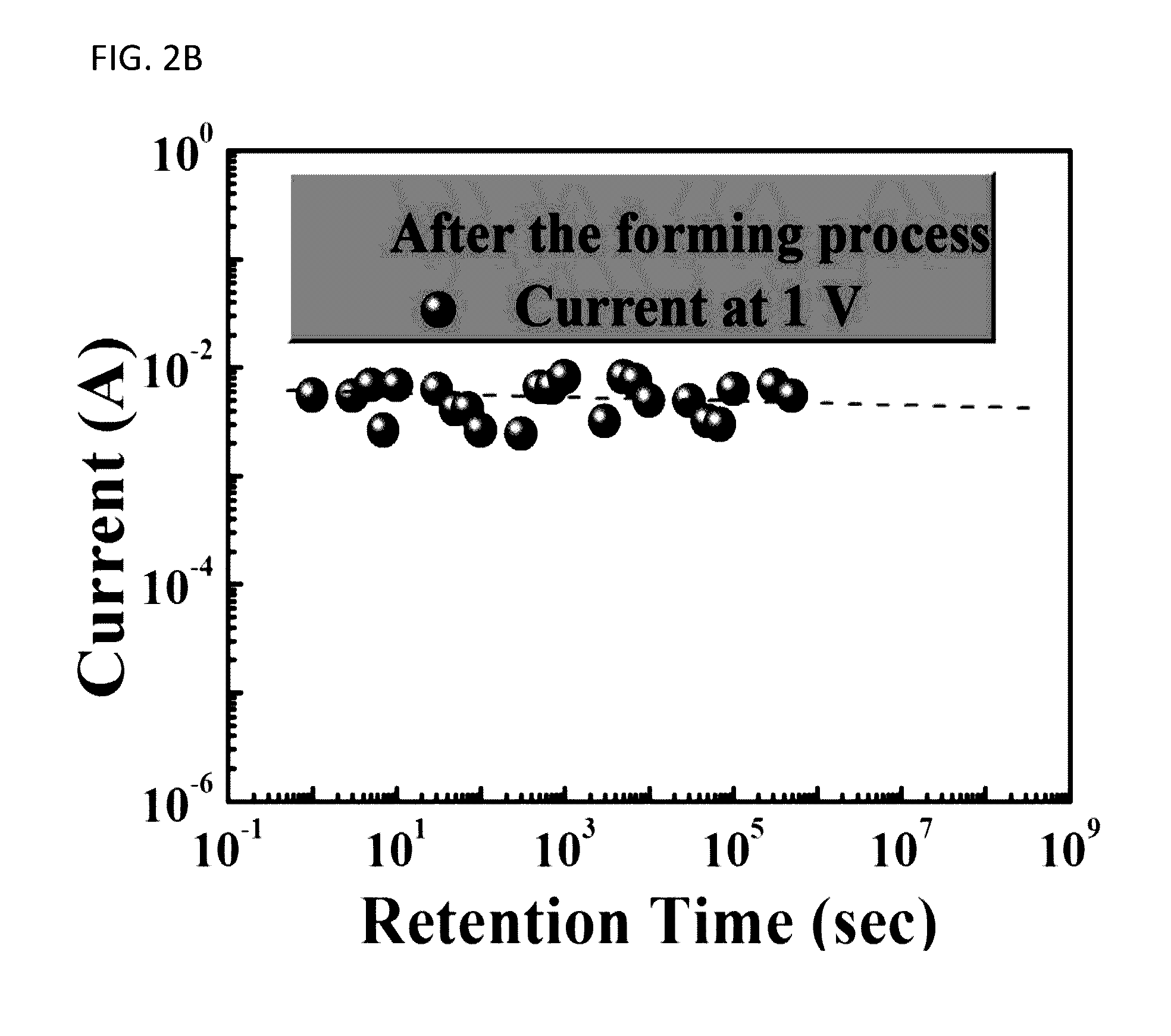Organic light emitting device having transparent electrode where conducting filaments formed and method of manufacturing the same
a light emitting device and organic technology, applied in the field of organic light emitting devices, can solve the problems of low light extraction efficiency, low charge injection efficiency, and inability to easily implement traditional light sources, and achieve good ohmic contact characteristics, high transmittance, and high transmittance
- Summary
- Abstract
- Description
- Claims
- Application Information
AI Technical Summary
Benefits of technology
Problems solved by technology
Method used
Image
Examples
first embodiment
[0039]FIG. 1 is a diagram illustrating a configuration of an organic light emitting device including a transparent electrode 140 according to the present invention.
[0040]Referring to FIG. 1, an organic light emitting device according to the first embodiment of the present invention is a top-emission type organic light emitting device. In the organic light emitting device, a second electrode 120 and an organic material layer 130 including a light emitting layer 135 are sequentially formed on a substrate 110, and the organic material layer 130 is configured by sequentially forming a hole injection layer 131, a hole transport layer 133, the light emitting layer 135, an electron transport layer 137, and an electron injection layer 139. Hereinafter, the case where the organic material layer 130 includes the hole injection layer 131 to the electron injection layer 139 will be described as an example. The configurations from the substrate 110 to the electron injection layer 139 may be the ...
second embodiment
[0064]FIG. 5 is a diagram illustrating a configuration of an organic light emitting device including a transparent electrode 540 according to the present invention.
[0065]Referring to FIG. 5, an organic light emitting device according to the second embodiment of the present invention is a bottom-emission type organic light emitting device. In the organic light emitting device, a first electrode 540 (hereinafter, referred to as a “transparent electrode”) is formed on a substrate 510 constructed with a transparent glass or a transparent plastic material, and an organic material layer 530 including a light emitting layer 535 and a second electrode 520 are sequentially formed on the transparent electrode 540. The organic material layer 530 can be configured by sequentially forming a hole injection layer 531, a hole transport layer 533, a light emitting layer 535, an electron transport layer 537, and an electron injection layer 539. Hereinafter, the configuration will be described as an e...
PUM
 Login to View More
Login to View More Abstract
Description
Claims
Application Information
 Login to View More
Login to View More - R&D
- Intellectual Property
- Life Sciences
- Materials
- Tech Scout
- Unparalleled Data Quality
- Higher Quality Content
- 60% Fewer Hallucinations
Browse by: Latest US Patents, China's latest patents, Technical Efficacy Thesaurus, Application Domain, Technology Topic, Popular Technical Reports.
© 2025 PatSnap. All rights reserved.Legal|Privacy policy|Modern Slavery Act Transparency Statement|Sitemap|About US| Contact US: help@patsnap.com



